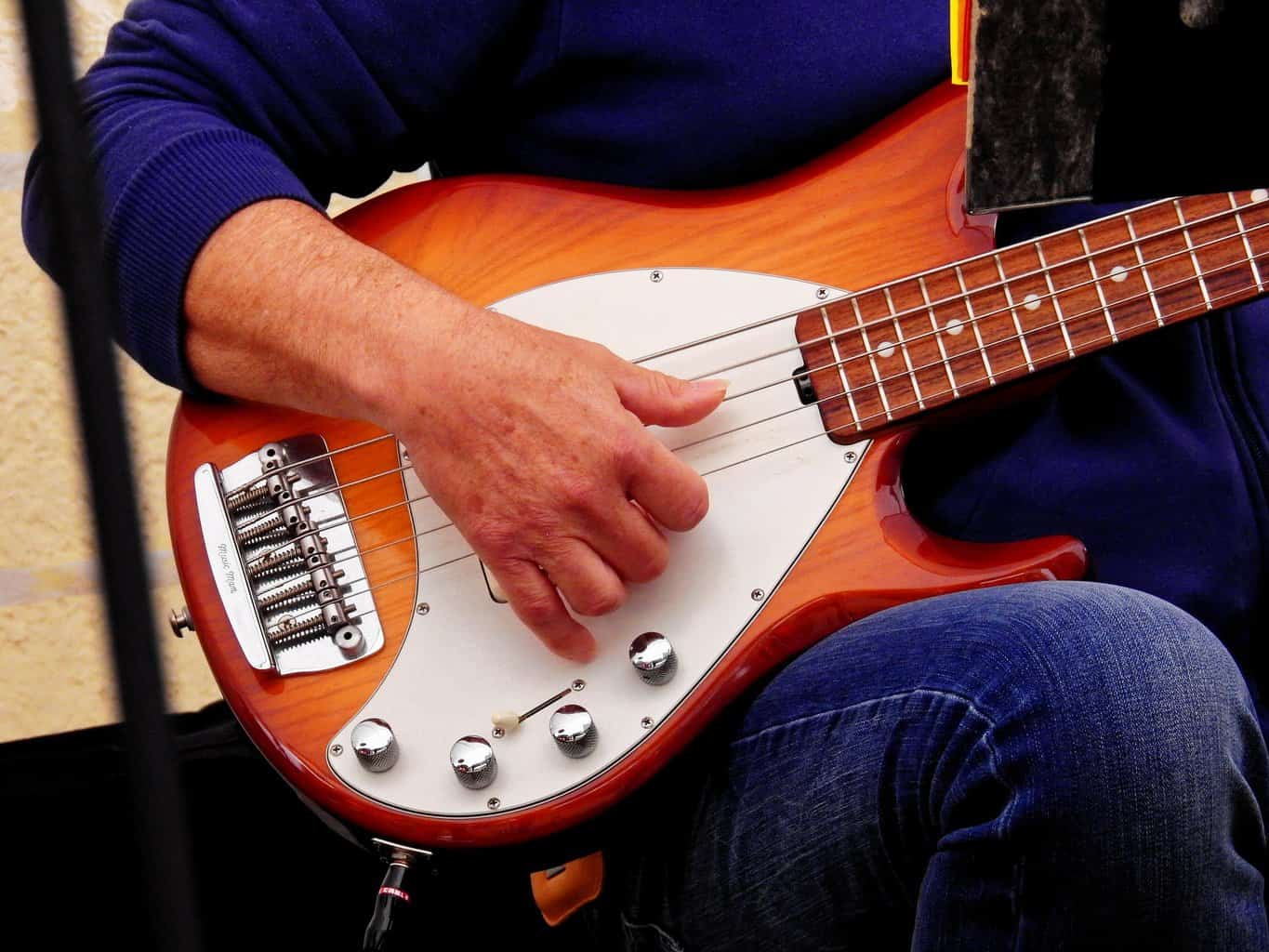It is very easy to forget the importance of pickups on instruments. However, their relevance to the sounds that a bass creates cannot be denied.
A common question people ask before purchasing a bass is whether to have a passive or an active pickup.
Sure enough, the final decision will affect not only the sound but the overall experience of playing.
The difference between active and passive bass pickups is that active pickups have a battery-powered preamp that increases their output and lets the player control tone from the instrument. Passive pickups don’t require batteries but also don’t have such advanced tone controls. Sound-wise they also differ.
In this article, you will find some of their main features and differences, as well as advantages, disadvantages, and reasons why you should want either one or the other.
What’s the difference between active and passive bass pickups?
Active and passive pickups are inherently different, although they might look similar to the uninitiated eye.
Both passive and active pickups consist basically of a coil winded around a magnet. This system magnetizes the strings, and when they vibrate, then picks up that energy and converts it into electric current.
The difference between these 2 types of pickups lies in the number of windings around the magnet, and how the outcome of that feature is dealt with.
You see, passive pickups have a greater number of windings that makes them generate a stronger output naturally.
Active pickups have far fewer coil windings, thus generating a lower natural output, but the big feature they include is a preamp, powered by a battery (the active part) that boosts that low output even higher than the levels achieved by their passive counterparts.
This included preamp also has the function of letting the player control the tone of the instrument in multiple bands of frequencies.
It lets you equalize your tone from the bass itself.
It’s worth mentioning, however, that this EQ control can only cut off frequencies, and not boost any, such as other kinds of tone-shaping units.
To make the differences between active and passive pickups clearer, I think this chart provides a quick summary of their main characteristics:
| Feature | Active Pickups | Passive Pickups |
| Batteries | Yes | No |
| Preamp | Yes | No |
| Tone shaping | Complete EQ | Treble cut off |
| Tone | Clear, modern | Warm, vintage |
| Noise/interference | Lower | Higher |
| Feedback | Higher | Lower |
Are active basses louder?
Indeed, active basses are louder. Their batteries power pre-amp units built into the instrument. The result: The bass itself amplifies the original signal way above the levels of passive pickups before sending it to the amp. So, the output is higher due to the inbuilt amp.
In practice, of course, you could control the volume of your rig at your amp or PA system. What the above means is that the signal out of the instrument will hit any input hotter than the one of a passive pickup equipped instrument.
Passive pickups pros and cons
Pros
Passive bass pickups present a set of advantages, but also, some drawbacks.
Let’s focus on the advantages first.
The good thing about passive pickups is that compared to actives, they don’t need batteries for functioning!
This means that running out of power is not an option with this pickup.
A further advantage can be its simplicity.
Their sound is round, fat, warm, and punchy. This is definitely a good thing for people looking for old-school music styles.
Cons
Focusing on disadvantages, we could mention the simplicity of its tone control.
This single tone control only can take away from the treble spectrum of the signal. This means that if you want to tweak any other band of your tone, then you will need to do it from a different source.
Another disadvantage could be that, due to the use of larger magnets, they pick up more interference and noise.
While some musicians may be ok with this characteristic, it is valid to claim it as one of its downsides.
Active pickups pros and cons
Pros
Active pickups have both pros and cons.
Regarding advantages, active pickups let you adjust your tone with more granularity during live performances.
In other words, it is not necessary to make any change to the amp. Most of what you need is available at the instrument.
Another quality characteristic is its preamp buffering and output level.
What’s good about it is that it helps retain sound on long cable runs.
What is more, it gives more signal for input and amp recording equipment.
Last, it is important to mention the bypass switch that some basses have.
This switch lets you turn off the active circuit whenever the battery starts dying.
It is a great tool for preventing sound to cut off during performances.
Cons
Now, if we focus on disadvantages, we can link it with the previous idea.
That is to say, the main problem is its battery.
Active pickups need batteries for functioning.
This is a problem because, as I mentioned before, a dead battery can leave you holding a dead instrument.
Finally, the tone of an active bass might not be for everyone.
These usually sound a bit more modern, and although the tone can be tweaked, many players prefer the vintage warmth of traditional passive pickups
Reasons to get a bass guitar with passive pickups
As mentioned before, there are no better pickups than others, and it’s all a matter of taste.
Different players will have different needs, and I think here is a brief summary of the reasons to choose a passive bass.
Bassists who chose passive pickups will prefer them because they are:
- Better for more “traditional sounds”
- Straightforward (its lack of versatility makes it easier)
- Impossible to run out of power in the middle of a performance
- A good option for vintage styles
- Better for beginners (due to its simplicity)
Reasons to get a bass guitar with active pickups
As there are passive pickup advocates, there also are active pickup fundamentalists.
In this battle of preferences, nothing is set in stone, and personal experience is the only guidance for many.
However, I think the following is a good summary of why players go for active pickups.
Some musicians will prefer active pickups for these reasons, among others:
- Excellent for more advanced bassists who look for specific sounds
- For having more control over the tone coming out of the bass
- Because they are more versatile
- For getting bright and clear sounds
Players that use passive pickups
Among the most popular musicians that play with passive pickups we can find the following:
- Geddy Lee (Rush)
- Cliff Williams (AC/DC)
- Paul McCartney (The Beatles)
- Jack Bruce (Cream)
Players that use active pickups
Others prefer active pickups. In this list we’ll find, among others:
- John Campbell (Lamb of God)
- Alex Webster (Cannibal Corpse) [Later albums]
- “Fieldy” Arvizu (Korn)
- Johnny Christ (Avenged Sevenfold)
Conclusion
Last but not least, remember that choosing the right pickups should not be your main concern.
Making music is absolutely not about losing countless hours in the search for the perfect tone.
And, although a specific sound can be inspiring, I think your time is better off spent working on your chops and musicianship.
Your final decision shouldn’t condition your playing style, but the opposite.
Once you have a solid technique and a unique voice, you will definitely know which kind of pickup better compliments your playing.
However, I sincerely hope this article has helped you know in more detail what the alternatives are.

Hello there, my name is Ramiro and I’ve been playing guitar for almost 20 years. I’m obsessed with everything gear-related and I thought it might be worth sharing it. From guitars, pedals, amps, and synths to studio gear and production tips, I hope you find what I post here useful, and I’ll try my best to keep it entertaining also.





